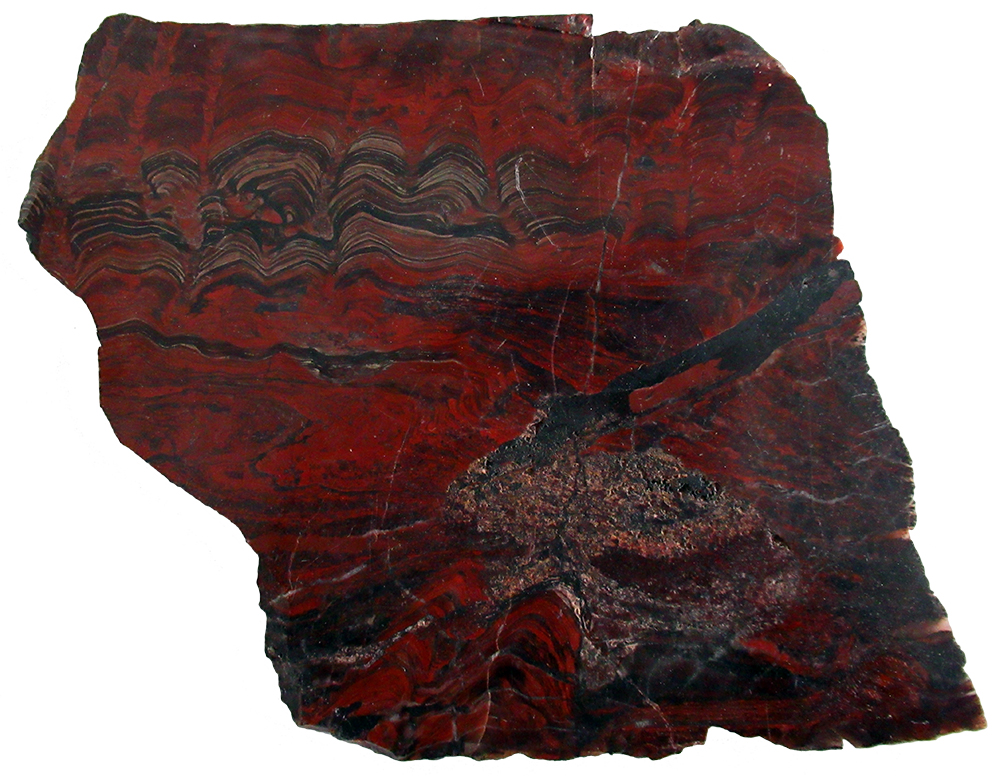
Biwabik Iron Formation, northern Minnesota - 1.9 BYA
Stromatolites, colonial structures created by cyanobacteria (in the past often called blue-green algae) are among the oldest fossils on earth, being found in rocks over 3 billion years old. Once the dominant life form on the planet, stromatolites are now found in only a few places, where high salinities or harsh conditions restrict grazing organisms from consuming cyanobacterial mats.
Cyanobacteria form these small layered columnar structures by growing through sediment, binding the particles together to form successive layers that lithify to form rocks, or as the decay of buried cyanobacteria alters water chemistry in interstitial pores to precipitate carbonate minerals. However, these stromatolites, from the Biwabik Iron Formation of Minnesota’ Iron Range, also reflect a particularly important period in the evolution of Earth systems.
The Earth’s early oceans and atmosphere contained little to no free oxygen. In the absence of oxygen, tremendous volumes of dissolved silica and iron accumulated in the early oceans resulting in very different chemical marine cycles than exist now. It was the evolution of photosynthetic cyanobacteria that largely produced the free oxygen of our modern oceans and atmosphere. As these cyanobacteria arose, they produced free oxygen as a photosynthetic waste product. But for over a billion years almost all the free oxygen produced quickly combined with the oceans’ dissolved iron and silica to create bedded deposits of iron ore and chert. It was not until the dissolved iron and silicon was largely exhausted that oxygen began to accumulate in Earth’s atmosphere and oceans. These Iron Range stromatolites record this evolution with alternating layers of iron and chert matching the layered textures of the original stromatolite columns.
However, these Iron Range stromatolites do not simply reflect the evolution of Earth’s surface chemical systems, but changes in its speed of rotation. Over time, tidal forces between the Earth and Moon slowed the Earth’s rotation. Although we can model the changes through time, daily growth bands in these ancient stromatolites can be used to confirm those calculations. Both suggest that roughly 2.5 billion years ago when the Earth first began to become oxygenated, a ‘day’ (the time it takes the Earth to rotate about its own axis) was only about 18 hours long and hence there were around 487 days in a year (the time it takes the Earth to rotate about the Sun).